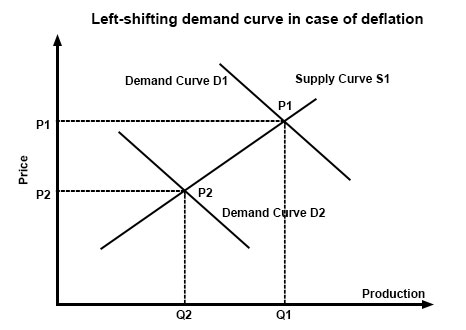Contents:


Die is how to say ‘the’ in front of both feminine singular nouns … and all plurals nouns! Up until now, all the examples of determiners we’ve worked with have been der-words. Other parts of speech used as nouns (gerunds, colors, languages, English -ing forms). Memorizing categories of nouns that have a particular gender is obviously a big time-saver over memorizing each individual noun. The nominative case is used when the noun is the subject of the sentence, or the person or thing that does the action. With that in mind, below is a simple and effective guide to figuring out when you should use ein, eine and einen.
Wells Fargo charts defined 2015 markets and economy – Business Insider
Wells Fargo charts defined 2015 markets and economy.
Posted: Tue, 22 Dec 2015 08:00:00 GMT [source]
What’s important is to embrace this aspect of https://1investing.in/ learning and to not get frustrated about making the same mistake a million times. The possessives that come in front of nouns could most accurately be called possessive determiners. That means they will take strong declensions except in our 3 exceptions spots. So for example, when you want to talk about “the dogs”, “the women” or “the boats” in the nominative case, the article is always die, even though these nouns all have different genders.
German Articles: Your Essential Guide
The table below displays a list of the most common preposition and article contractions. Picking out the correct form of ‘the’ to use at the right time is a matter of knowing the gender & case of the noun. What you need to know to start getting the hang of der die das. In German, the definite article is much more important than it is in English. An English-speaker might say “nature is wonderful.” In German, the article would also be included to say “die natur ist wunderschön.”
Remember, we have the one variety (my, your, our, etc.) that comes in front of nouns and the other (mine, yours, ours, etc.) that stands alone. Remember instead that all of these words are simply determiners (that, of course, each have their own distinct meanings of the, a, this, my, etc.). With this much information, you know that you need the das, dem, or des version of the neuter ‘the’. Some people use the same term ‘articles’ to refer to other words come in front of nouns (e.g. this, that, some, all, etc.). Fun-loving Irish guy, full-time globe trotter and international bestselling author.
- The third-person pronouns follow the rule that only the masculine gender shows any change in the accusative case.
- Again, it is so much more efficient to memorize over-arching noun gender categories vs. the gender of each, isolated German noun.
- In the exercises, you can practise what you have learnt.
- German and English structure sentences very differently and understanding how & why is essential.
There are no quick fixes and it will not come to you overnight, but gradually and with experience. The more you expose yourself to the German language, the easier it will be for you. Whether you play the Grammar Challenge or just the Fast Track, you’ll get plenty of exposure to how German definite articles are used in context. The most successful language learners know that learning to speak a language isn’t about memorizing lots of tables by heart, but about having fun with it.
Personally, I advocate for ditching the term articles altogether (read more below!). Instead, I refer to determiners AND pronouns AND adjectives all as very clearly different types of words. This is why you need to learn the plural endings for the indefinite article. They’re not valid words in their own right, but they’re used to construct other important words. German articles – that is, the German for “the” and “a” – are very different than in English. Every article must agree with its noun in both gender and case, and if you get it wrong it can change the meaning of your sentence.
Is it der, die oder das Chart?
They are committing the action and are, therefore, in the nominative case. No matter how many rules a language may have, many of them can be picked up intuitively. The more you immerse yourself in the language, the easier it is to digest the grammar as it comes along. FluentU provides a natural way to hear these three little words by native French speakers.
Coronavirus: Why You Must Act Now by Tomas Pueyo Medium – Medium
Coronavirus: Why You Must Act Now by Tomas Pueyo Medium.
Posted: Sat, 31 Oct 2020 18:01:20 GMT [source]
The other element that decides the article of a noun is the part of the sentence that the noun represents . Is the noun the subject of the sentence and the person or thing that does the action? These questions are important in determining the noun’s case, the other component that decides its article. I learned more about gender, articles and nouns from this article than I had learned from several other sources. ” (although I might bring this up once the crisis was resolved ☺). It didn’t matter that they used the feminine article instead of the neuter, I could still understand what they were trying to say.
When to use der, die or das
You can look out for them as you watch—just hover over them or any other word in the subtitles to see a full contextual definition, complete with text and video examples. Or you can search for the words you want to see for a collection of all the videos that include that word. The following table shows some of the suffixes that indicate a specific gender. The word ending has a lot to do with the article, so memorize those and practice, practice, practice.

We’ve got to put declensions on words such as this, that, some, many, etc. In fact, we need to put declensions on some additional words, too (and we’ll cover that!). The meaning of both of these sentences is still that the man owes the woman (and before you think ‘der Frau’ was a typo, read my Dative Case Guide; otherwise, just trust me for now!).
Der/das/die and Ein-word endings (including endings for the possessive adjectives mein, dein, sein, ihr, unser, euer)
There are some other situations in which you might need to change the noun’s ending; see here for a detailed guide. For example, in the English sentence “I gave a present to John”, “a present” is the direct object and “John” is the indirect object. Every noun is categorised as either masculine (männlich), feminine or neutral (sächlich). Note how the order of the words may change, but as long as you have the proper accusative articles, the meaning remains clear. The indirect object is usually the receiver of the direct object . In the first example above, the driver got the ticket.
When the adjective is used with anein-word (einen,dein,keine, etc.), the accusative adjective ending must reflect the gender and case of the noun that follows. The adjective endings -en, -e, and -escorrespond to the articlesden,die, anddasrespectively (masc., fem., and neuter). Once you notice the parallel and the agreement of the lettersn,e,swithden,die,das, it makes the process a little clearer.
There are strong and weak declensions AND also 3 instances when no declension is used. It is more accurate to refer to articles as determiners. Determiners are little words (the, a, some, few, etc.) that tell us which one or how many. German is an inflected language that uses declensions to indicate the case of each noun in any given sentence. Technically, the best term for the ‘stand-alone’ possessives is possessive pronouns (because pronouns take the place of nouns / noun phrases). OK, so here we need to look at examples for our two types of possessives.
You do not have to learn ALL the genders of ALL the nouns by heart – there are shortcuts. Declensions follow two standard patterns, and then there’s a 3rd exception pattern that occurs in just 3 instances when specifically an ein-word determiner is used. Since German nouns also have gender, this feature also has to be taken into account when figuring out the right declensions to use in each situation. But when it’s simply a matter of picking the right declension for your determiner (so, we’re saving the discussion on adjectives for another day), then the process is extra easy.
The feminine genitive (der/einer) is identical to the feminine dative. The one-word genitive article usually translates as two words (“of the” or “of a/an”) in English. The four German cases are the nominative, genitive, dative, and accusative. You can think of these as the equivalent of the subject, possessive, indirect object, and direct object in English. German nouns belong either to the gender masculine with the definite article der, to the feminine with the definite article die, or to the neuter with the definite article das. Der nette Mann is a masculine noun phrase in the nominative case, taking a strong declension on the determiner and a weak declension on the adjective as dictated by declension pattern #1.
ALL of those 10 charts fit together nicely with primarily overlapping material. The good news is that all these charts have much more in common than not. I already mentioned the obvious similarity between the German genitive and the English “Saxon genitive”. Compare, for example, des Hundes and des Boots with “the hound’s” and “the boat’s”. In English, the accusative case is known as the objective case . In English, this is expressed by the possessive “of” or an apostrophe with an “s” (‘s).
- The word “the” starts looking like the most beautiful, efficient word ever conceived once you start learning a new language—particularly German.
- Eventually, you’ll be able to naturally distinguish between the cases, as well as to remember the gender of more nouns.
- Instead, they tell you how to construct the plural forms of certain related words like kein and mein.
- Notice how the feminine and neutral articles haven’t changed.
As you continue your studies, you’ll also be introduced to the dative case, which is applied to indirect objects, as well as the genitive case, which is used to express possession. Savelearning the dative and genitive cases for when you have the nominative and accusative down pat. Below, you’ll learn why it’s handier to memorize the definite article as opposed to the indefinite article. The gender of a noun is one of the determining factors in deciding which definite and indefinite articles are appropriate for a sentence. One easy aspect of German nouns is the article used for noun plurals. All German nouns, regardless of gender, become die in the nominative and accusative plural.
Sagt man der, die, oder das…
While the noun’s gender is pretty meaningless (but still has to be accounted for — rats!), the noun’s case is VERY important information. Read here for examples, exceptions, and a longer list of other suffixes that are mostly (60-90%) one gender over the others. Memorizing hundreds of individual German nouns is enough work already — but to try making a random association between each one and either der, die or das? Forget linking gender to a specific meaning or concept.
The nominative case—in both German and in English—is the subject of a sentence. The term nominative comes from Latin and means to name (think of “nominate”). Amusingly, der Werfall translates literally as “the who case.”
And if you’re more the video type, maybe these will help you out. Very often—though not always—words ending with an -e also have the die article, like dieLampe. Consider the article an inseparable part of the word itself. Here’s another example on how to use the determiner ‘the’ with the All-In-One chart. We can categorize German nouns according to group or form. You’ll also learn why you can forget about articles and what terminology / concept to focus on instead!
How to know the gender of any noun
The 17 best prepaid debit cards with no fees Chart is , therefore the correct article is . Next, you’re going to learn how to use this All-In-One Chart to specifically for the nominative case. Those final letters are the super-important parts! All the information about noun case is in those final letters! In English, we use word order to indicate the role of each noun .

Many German learners find the DATIVE case to be intimidating, but when it comes to adjective endings in the dative, it couldn’t be more simple. And this simple rule applies to adjectives used with either the definite or indefinite articles (andein-words). This table provides a simple overview of the declension of definite and indefinite articles the nominative, accusative, dative and genitive cases in German grammar.
So go out there, have some fun with German, and definite articles will follow suit. It’s ok to learn their declension, the noun suffixes, etc., I stand by all of the advice I have given in this article. But even if you work really, really hard, study all the cases and endings, always write down the article when learning a new word, you will inevitably make mistakes.
Each grammar topic comes with one free exercise where you can review the basics, as well as many more Lingolia Plus exercises where you can practise according to your level. Check your understanding by hovering over the info bubbles for simple explanations and handy tips. The world would be an easier place if all languages had the same grammar rules and shared similar structures and it was simply a matter of switching vocabulary between them. In addition, there are certain prepositions that always take the accusative. Some of the most important of these includefür , durch , bis , um , ohne , entlang andgegen . Notice that in each of the examples, the subjects—a frog, a woman and a book—are the “doers” of the sentence.
And as long as I can do that, they are doing awesome. Instead of attempting to memorize those 10 charts (up to 160 words!!!), you can learn smarter, not harder by memorizing just the declensions themselves. Generally, when a masculine or neutral noun is genitive you also need to add -s or -es on the end, e.g. der Hund becomes des Hundes.

